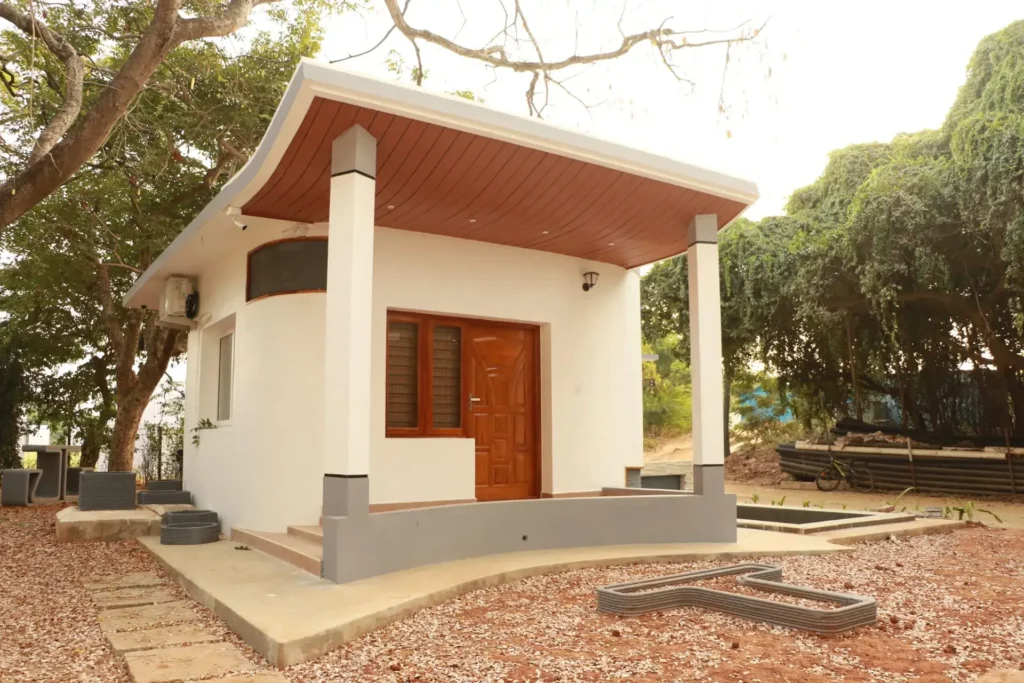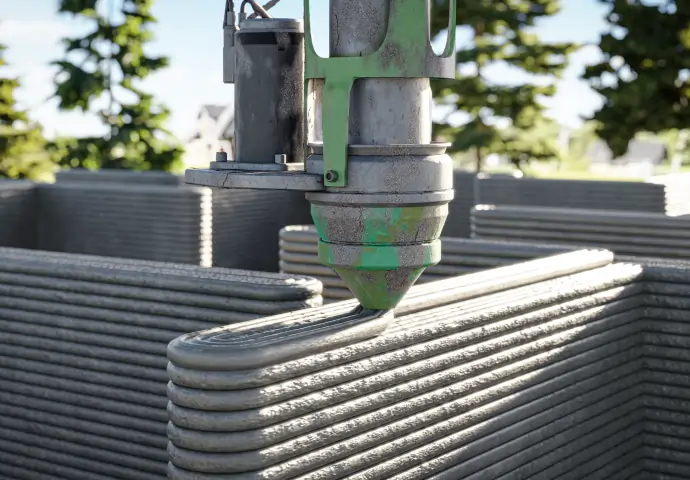3D Printed House: Revolutionizing Construction in India
The concept of a 3D printed house is rapidly transforming the construction industry. With the potential to reduce costs, minimize waste, and significantly speed up the building process, this technology has caught the attention of innovators, architects, and environmentalists alike. In India, where housing demand is rising due to urbanization, 3D printed homes are emerging as a sustainable and efficient solution. This blog explores the technology, its applications, costs, and its future in India, with a nod to how Kikstaart Edu’s 3D printing program equips learners to thrive in this space.
What is a 3D Printed House?
A 3D printed house is a building structure created using additive manufacturing technology. Instead of traditional construction methods, which rely on bricklaying or concrete pouring, 3D printing uses specialized machines to deposit material layer by layer. These machines, guided by digital designs, can produce complex and precise structures with minimal human intervention.
How Do 3D Printed Houses Work?
1. Digital Design: Engineers and architects create a 3D model using CAD software.
2. Material Selection: Materials like concrete, polymer, or composites are chosen based on the structure’s requirements.
3. Layer-by-Layer Printing: A 3D printer deposits the material according to the digital blueprint, constructing walls, roofs, and other elements.
4. Assembly: Once printed, components are assembled on-site (if not printed directly at the location).
This process drastically reduces labor requirements and speeds up construction timelines.

India’s First 3D Printed House: Built by Tvasta Manufacturing Solutions in Chennai in 2021, this house was completed in just five days.
3D Printed Houses in India: Pioneering Projects
India has started exploring the potential of 3D printed homes, particularly in addressing housing shortages and disaster relief needs. Some notable milestones include:
- India’s First 3D Printed House: India’s first 3D printed house, developed by Tvasta Manufacturing Solutions in collaboration with IIT Madras, marked a groundbreaking achievement in sustainable construction. Completed in 2021, this single-story structure spans 600 square feet and was built in just five days using an eco-friendly concrete mixture. Designed to address India’s affordable housing needs, the house demonstrates the potential of 3D printing to create durable, cost-effective homes while reducing construction time and material waste. This pioneering project showcases India’s stride towards innovative and sustainable building technologies.
- Affordable Housing: Organizations like Habitat for Humanity are piloting projects in India to provide low-cost 3D printed homes to underserved communities.
- Disaster Relief Housing: Quick assembly and portability make 3D printed homes ideal for regions affected by natural disasters like floods and earthquakes.

Benefits of 3D Printed Houses
1. Cost Efficiency: Construction costs are significantly reduced due to minimal labor and material wastage.
2. Time Savings: Entire homes can be built within days, compared to months using traditional methods.
3. Sustainability: Materials used are often recyclable, and the process generates less waste.
4. Customization: Complex and unique designs can be executed with precision.
5. Reduced Dependency on Skilled Labor: Automation minimizes the need for a large, skilled workforce.
Machines Used for Building 3D Printed Houses
1. Concrete 3D Printers: These are large-scale printers specifically designed to print with concrete mixtures.
– Example: ICON Vulcan, COBOD BOD2.
2. Hybrid 3D Printers: Machines capable of using multiple materials for versatile applications.
3. Desktop 3D Printers for Models: Before actual construction, desktop printers are used to create prototypes.
Key features to consider in a machine:
– Printing Speed
– Material Compatibility
– Precision and Resolution
Cost of 3D Printing Machines for Housing
The cost of a 3D printer for construction varies based on its capabilities:
– Entry-level models: ₹25 lakh to ₹40 lakh
– Mid-range models: ₹50 lakh to ₹1 crore
– High-end machines: ₹2 crore and above
While these machines are an upfront investment, their cost-effectiveness in the long run makes them appealing for large-scale housing projects.
How Much Does a 3D Printed House Cost in India?
The cost of a 3D printed house depends on several factors, including size, material, and complexity of the design.
– Basic 1BHK Home: ₹5-10 lakh
– 2BHK Home: ₹10-15 lakh
– Custom Designs: ₹20 lakh and above
Compared to traditional construction, 3D printed houses can be 30-50% more affordable.
Challenges of 3D Printed Houses in India
1. High Initial Investment: Machines and materials can be costly upfront.
2. Lack of Awareness: Limited knowledge about the technology among builders and buyers.
3. Regulatory Barriers: Absence of standardized guidelines for 3D printed structures.
4. Material Availability: Dependence on imported materials in some cases.
Despite these hurdles, advancements in technology and increasing interest from policymakers are paving the way for widespread adoption.
Future of 3D Printed Houses in India
India’s construction industry is on the brink of a revolution with the adoption of 3D printing.
– Smart Cities: 3D printing aligns with India’s Smart Cities Mission to create sustainable urban environments.
– Affordable Housing: It offers a scalable solution to meet the housing needs of the growing population.
– Environmental Goals: Reduced waste and energy consumption make it an eco-friendly choice.
How to Get Involved in the 3D Printing Industry
To be part of this transformative field, acquiring the right skills is crucial. This is where Kikstaart Edu’s 3D Printing Programs come into play.
About Kikstaart Edu’s 3D Printing Program
Kikstaart Edu offers comprehensive training programs tailored for aspiring professionals:
– 6-Month CAD Modelling and 3D Printing Diploma: Learn Fusion 360, SolidWorks, AutoCAD, and advanced 3D printing techniques. Gain hands-on experience in slicing, prototyping, and mechanical modeling.
– 3-Month Short-Term Course: Perfect for individuals seeking a quick introduction to 3D printing.
Both programs are approved by Kerala State Rutronix and provide flexible learning options (onsite and hybrid). Graduates can pursue careers as 3D Designers, Game Designers, Jewellery Modellers, or Freelance 3D Printing Technicians.
The rise of 3D printed houses in India is a testament to how technology can revolutionize traditional industries. From cost savings to sustainability, the benefits are manifold. For individuals looking to leverage this trend, training programs like those offered by Kikstaart Edu provide a strong foundation to excel in this exciting field.
Start your journey today and become a pioneer in the 3D printing revolution!
